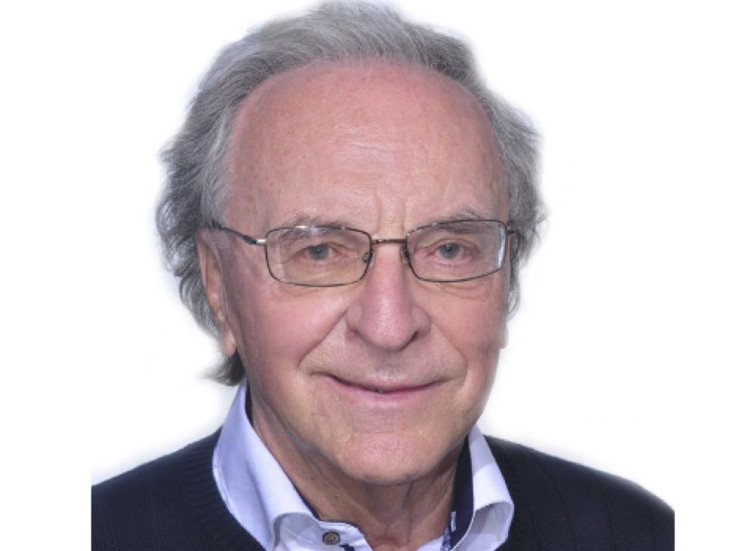Wilhelm’s Masterstroke in Biosciences

The world is constantly evolving, and with new advancements in technology, it becomes clearer by the day as to how human biology works in regards to DNA, genomics and genes. Anyone dedicated to the field of biosciences is no less than a hero because of their innovations intended for the betterment of human health. When it comes to the science of gene, it is a relatively new field of exploration in biomedical sciences. However, there are many people to whom we owe for exploring and advancing the field of gene analysis.
One of the major names of Sequencing and the Analysis of Genome is that of Wilhelm Ansorge of the Academics Institution. He was born and raised in Germany and Czech Republic, where he later pursued his career as a Biomedical Scientist. He has achieved tremendous success in his field and is now working hard to share his contributions achieved in the biomedical industry with the rest of the world.
Early Life of Wilhelm:
Before Wilhelm initiated the historical development of the automation in the DNA sequencing field, from the start-up to the next-generation systems, including the technical principles of some of the platforms priorly existing since almost six years ago, many applications have been generated and fully-functional in the field.
In order to be internationally recognized as a trusted and reputable entity in his field, he spent two years researching and completing his dissertation at the Faculty of Mathematics and Physics, Charles University Prague. He then worked at Texas Instruments at its central location in Dallas, USA. Following his initial professional tenure, he then spent another six years of his professional life at CERN where he was part of the development team that was responsible for developing superconducting magnets required for the new generation of high energy accelerators. After leaving CERN, he dedicated 25 years of his life to the European Molecular Biology Laboratory EMBL, in Heidelberg.
Wilhelm’s Contributions
During 45 years of service, he upholds introducing the novel Scientific Instrumentation and Software as something that is the pinnacle of his career. The techniques and software allow the analyzing of genomes, genes and proteins on a much deeper level, bestowing a greater understanding of the complexities of living things. His laboratory was the one of the first ever that used multidisciplinary developments of automated technology and techniques; e.g. a technique that helped in achieving the first complete Human Genome Array.
This is not to say that the diagnostics field was totally barren before Wilhelm touched it and it turned to gold. In fact single cell isolation techniques were being performed. However, it can be said that Wilhelm brought it to the mainstream public attention. This only led to a lot of people being interested in the field and, in turn, helped in expanding the researches being done.
As of now, his main research work has taken a backseat, and his preference is to work as a visiting scientist in several European Institutions in Heidelberg, Prague, and EPFL-ETH, Lausanne. He lends his expertise evaluating various projects and therefore indulges himself in training younger scientists to progress much faster by learning from the results and applications of his work. Wilhelm is primarily recognized as a published author and has over 250 publications in his name, and the list continues to grow with time. The publications are intended to assist emerging scientists in knowing the latest developments in Biosciences. Amazingly, someone knows so much about Next-Generation DNA Sequencing that he produced five books around the subject-matter.
Next-Generation DNA Sequencing is all about opening a doorway to a whole world of unexplored mysteries of cell life. Fields that had never been heard of until three decades ago are now being considered to grow the medicinal industry. Wilhelm aims to delve into the intricate details of the human body through the use of automated technology. This way, the process of understanding any disease or new virus will be quicker, thereby significantly reducing the loss of life. One of Wilhelm’s paper “Microarray and Single Cell Analysis Techniques in Bio-medical Fields” outlines how the pharmaceutical industry and the public health industry will grow with molecular diagnostic technology. It was also through Wilhelm’s efforts that the world truly believed that the genomics and proteomics techniques combined would form the pharmacogenomics field. The emerging field would lead to more personalized diagnosis and treatment for patients with varying ailments, even those that are currently considered incurable.
Leaving a Legacy Behind:
It is clear through Wilhelm’s story that the scientist tried to make the world a better place and has stuck true to his goals. His efforts in creating new methods and also educating the youth have proven that his main aim is not recognition but rather to be an inspiration and support for multidisciplinary studies and research, for those emerging in the field after him. Anyone willing to establish an understanding of biosciences should start by embracing the legacy that Wilhelm has created.





















